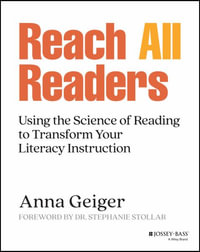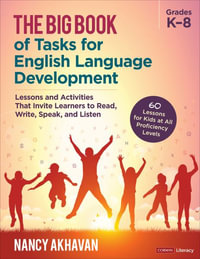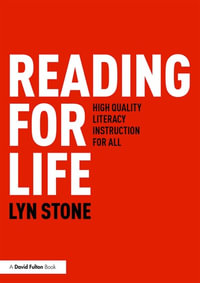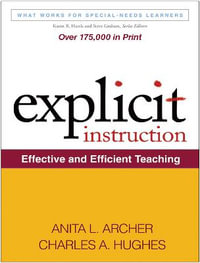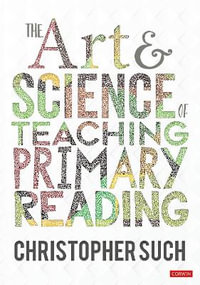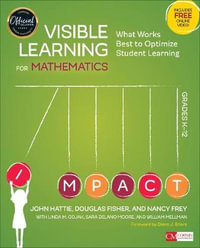The Authors iii
Tables, Figures, and Exhibits xi
Foreword xv
Preface xvii
1 Introduction to college teaching 1
1.0 Welcome to the university, there’s your office, good luck 1
1.1 Making learning happen 2
1.2 Learner-centered teaching: Definition, warning, and reassurance 5
1.3 What’s in this book? 7
1.4 How to use the book 9
PART ONE Designing courses
Interlude. What do they need to know? 13
2 Learning objectives: A foundation of effective teaching 17
2.0 Introduction 17
2.1 Writing and using course learning objectives 19
2.2 Bloom’s taxonomy of educational objectives 30
2.3 Addressing course prerequisites and program outcomes 34
2.4 Ideas to take away 36
2.5 Try this in your course 37
Interlude. Good cop/bad cop: Embracing contraries in teaching 39
3 Planning courses 41
3.0 Introduction 41
3.1 Three steps to disaster, or, how not to approach course preparation 42
3.2 A rational approach to course preparation and redesign 43
3.3 Choosing a course text or content delivery system 47
3.4 Formulating a course grading policy 47
3.5 Writing a syllabus 51
3.6 The critical first week 52
3.7 Ideas to take away 63
3.8 Try this in your course 63
Interlude. How to write class session plans (or anything else) 65
4 Planning class sessions 67
4.0 Introduction 67
4.1 Avoid common planning errors 69
4.2 What’s in a class session plan? 69
4.3 Promote long-term memory storage, retrieval, and transfer 70
4.4 Two cornerstones of effective class sessions 74
4.5 Plan good questions and activities 76
4.6 Don’t turn classes into slide shows and verbal avalanches 78
4.7 Use handouts with gaps 81
4.8 Planning undergraduate laboratory courses 84
4.9 Ideas to take away 86
4.10 Try this in your course 87
PART TWO Teaching courses
5 Elements of effective instruction 91
5.0 Introduction 91
5.1 Make class sessions effective 92
5.2 Make pre-class assignments effective 96
5.3 Don’t be a slave to your session plans 99
5.4 Keep improving your teaching 100
5.5 Ideas to take away 104
5.6 Try this in your course 104
Interlude. Meet your students: Aisha and Rachel 107
6 Active learning 111
6.0 Introduction 111
6.1 What is active learning? 112
6.2 Structures and formats of activities 114
6.3 How well does active learning work? Why does it work? 116
6.4 Active learning for problem solving 119
6.5 Common active learning mistakes 122
6.6 Common active learning concerns 125
6.7 Active learning in recitations and flipped classrooms 128
6.8 Ideas to take away 128
6.9 Try this in your course 129
Interlude. Is technology a friend or foe of learning? 131
7 Teaching with technology 135
7.0 Introduction 135
7.1 Instructional technology tools 135
7.2 Learning benefits of technology 137
7.3 Setting up communications 139
7.4 Integrating technology into instruction 141
7.5 Blended learning and flipped classrooms 142
7.6 Online courses 146
7.7 Ideas to take away 149
7.8 Try this in your course 149
Interlude. Meet your students: Michelle, Ryan, and Alex 151
8 Evaluating knowledge, skills, and understanding 155
8.0 Introduction 155
8.1 Multiple-choice and short-answer questions 156
8.2 Evaluating and promoting conceptual understanding 160
8.3 Evaluating problem-solving skills 164
8.4 Evaluating reports and presentations 175
8.5 Ideas to take away 182
8.6 Try this in your course 183
PART THREE Facilitating skill development
Interlude. Meet your students: Stan and Nathan 187
9 Problem-solving skills 189
9.0 Introduction 189
9.1 The long, steep path from novice to expert 190
9.2 Strategies for teaching expert problem-solving skills 193
9.3 A structure for complex problem solving 200
9.4 Problem-based learning 207
9.5 Ideas to take away 208
9.6 Try this in your course 209
Interlude. Meet your students: Dave, Megan, and Roberto 213
10 Professional skills 217
10.0 Introduction 217
10.1 How can professional skills be developed 218
10.2 Communication skills 221
10.3 Creative thinking skills 222
10.4 Critical thinking skills 230
10.5 Self-directed learning skills 235
10.6 Project-based learning 238
10.7 Creating a supportive environment for professional skill development 239
10.8 Ideas to take away 241
10.9 Try this in your course 242
Interlude. Sermons for grumpy campers 243
11 Teamwork skills 245
11.0 Introduction 245
11.1 Cooperative learning 246
11.2 How should teams be formed? 248
11.3 What can teams be asked to do? 252
11.4 Turning student groups into high-performance teams 255
11.5 Dealing with difficulties 263
11.6 Ideas to take away 268
11.7 Try this in your course 269
12 Learner-centered teaching revisited 271
12.0 Introduction 271
12.1 Aspects of student diversity 272
12.2 Inductive teaching and learning 279
12.3 Learner-centered teaching strategies 283
12.4 Last words 285
References 287
Index 311

